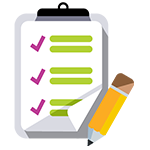Looking Past the FAST: The Importance of Benchmark-Level Data in Florida
We’ve heard many Florida educators express frustration over the fact that the new Florida Assessment of Student Thinking (FAST) in ELA and math does not provide benchmark data at the individual student level. The FAST reports are divided into groups of related Benchmarks for Excellent Student Thinking (B.E.S.T.), called reporting categories. These categories provide strengths and weaknesses but only at the aggregate level (i.e. class or grade) and not at the individual student level.

This poses a major limitation: because these reports only show aggregate data, educators and administrators don’t know where individual students are excelling or where they’re struggling. Without detailed reporting, how are educators expected to tailor their instruction?
That’s where Progress Learning comes in. Our K-12, B.E.S.T-aligned solution for Florida allows educators, administrators, and students to dive deep into their benchmark-level data, not just at the aggregate level. We offer a variety of reports that show where students are struggling all the way down to the specific benchmark. Then, with this valuable data, we make it easy to remediate and target learning gaps in just a click.
Let’s take a closer look at these features:
- Drill Down to the Benchmark Level with Progress Learning Reports
Once students take an assessment in Progress Learning (formative, summative, diagnostic, benchmark, etc.), we provide immediate reports on their performance. While these reports offer an aggregate view of domain data, they also offer so much more. Our Progress Reports with dot rank show the domain-level data broken down by each B.E.S.T. Green means achieved mastery, yellow means need practice, and pink means they have not met that benchmark and need additional support.
With our reports, it’s like putting on the right prescription glasses — it clarifies the picture. Educators can look at this report and immediately see student performance at a micro level. They can then use this micro-level data to determine how best to inform their classroom instruction, adjust their content strategy, and offer appropriate remediation, tutoring, and reteaching. Students can also review their own data to understand their weaknesses and where they should focus their practice.
- Provide Tailored Remediation Based on the Data
With this valuable data in hand, educators can now proceed with their instruction in a strategic, data-driven way. Using the Progress Report with dot rank, they can pinpoint all the pink and yellow dots. These signify the specific benchmarks that need additional reinforcement or reteaching.
Then, right within the Progress Report module, educators can assign remediation with our Quick Click Remediation feature. Our platform will provide students with remediation that is perfectly tailored to their needs so they can close learning gaps in their specific benchmarks.
Educators and administrators love our Quick Click Remediation because it truly simplifies and streamlines remediation. True to its name, Quick Click Remediation is fast and takes just one click of the mouse to assign.
These two features — benchmark-level reports and Quick Click Remediation — have the power to transform instruction in Florida. And for many of our schools and districts, it has. If you’re interested in learning more about how to use our benchmark-level data to grow your students’ test scores and improve their B.E.S.T. mastery, please feel free to reach out for a quick demo of the platform. We’d love to show you around!


